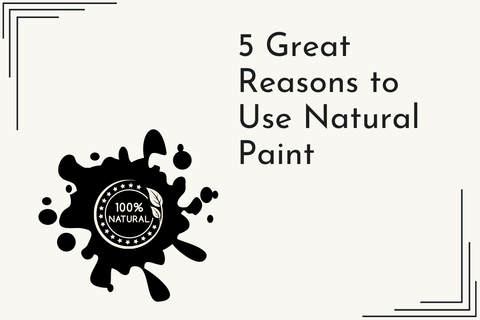Picking the correct paint for interior walls is essential in creating an effective interior design. Whether aiming to create an atmosphere of comfort and welcome or a striking feature wall, the selection of appropriate paint can be critical. But what exactly makes one type of paint better than another? And what are some natural options available that offer environmental benefits? In this blog post we’ll explore these questions and more as we dive into “the best types of paints for interior walls?” From choosing between oil-based vs water-based products to understanding which natural alternatives have great performance properties, let’s get started on our journey towards finding your perfect match.
Interior Wall Paint Types
When it comes to decorating the inside of your house, there are various types of paints available for you to select from. Emulsion paints are one of the most popular options due to their ease of use. Emulsion paints boast excellent coverage, and come in a myriad of hues to choose from. The benefits include being non-toxic, low odour, quick drying time they can be cleaned with soap and water, and great adhesion properties. When applying emulsion based paint be sure to use an appropriate primer for best results as well as two coats for full coverage.
Oil-based paints offer superior durability compared to emulsion but require more effort when cleaning up after application. The benefits include providing better resistance against fading or discoloration over time due to UV exposure or moisture damage such as mould growth or mildew staining on surfaces like wood siding or trim boards around windows and doors. It also provides good adhesion properties which make it ideal for high traffic areas such as hallways or stairwells where scuff marks may occur. When applying oil-based paint be sure to use mineral spirits instead of soap and water for cleanup purposes since this type is not water soluble like emulsion is; also apply at least two coats for full coverage just like with emulsion paints too.
Acrylic paints are another option that offers many advantages including being non-toxic, having fast drying times (usually within 30 minutes), and excellent adhesion properties making them suitable even on glossy surfaces without having to sand down first before application. Acrylics come in a plethora of hues, so you can locate the perfect shade for your decor. When using acrylics keep in mind that they do require some special preparation steps prior to painting such as priming the surface first if needed; also apply at least two coats just like with other types mentioned above.
Interior wall paints come in a variety of types and styles, each with their own benefits. From traditional emulsion to natural options like clay or milk paint, there are many ways to achieve the look you desire while keeping your home eco-friendly. Now let’s explore the advantages of some more natural interior wall paint options.
Natural Paint Options and Their Benefits
Clay Paints are an environmentally friendly option for those looking to decorate their homes. Clay paints, crafted from natural clays and mineral pigments, are a great way to reduce one’s environmental footprint. Clay paint boasts an impressive longevity, lasting up to a decade or more when properly cared for. It also has excellent breathability which helps prevent moisture build-up in walls, ceilings, and floors. In addition, the colours remain vibrant over time due to its unique pigment blend. When applying clay paint, it’s important to use a quality brush or roller as this will ensure even coverage and minimise streaking or blotching on the surface being painted.
Milk paints are another eco-friendly option for home decoration projects. Milk paints are crafted from milk proteins combined with earth pigments, allowing them to boast a vibrant spectrum of shades. Additionally, milk paint provides excellent durability without sacrificing aesthetics; meaning your walls will look just as beautiful many years later as they did when first painted. When applying milk paint make sure you mix thoroughly before painting so that all particles have been evenly distributed throughout the mixture resulting in smooth finish free from streaks or patches once dry.
Using natural paint options can provide a healthier and more sustainable way to decorate your home, while also creating beautiful finishes.
Choosing the Right Paint for Your Home’s Interior Walls
When deciding which paint to use for the inside of your home, there are certain elements you ought to contemplate. The living room/family room/den/ room is often the centre of activity and entertainment, so you want to choose a colour that reflects your style while also making it feel warm and inviting. If you have high ceilings or large windows, darker hues can help create an intimate atmosphere. For those with smaller spaces, consider using lighter colours like pastels or whites to make the space appear larger.
Conclusion
When deciding on the optimal paint for interior walls, there are numerous possibilities to choose from. Natural paints provide advantages, including being eco-friendly and having a reduced amount of chemicals than traditional paint products. When picking the ideal paint for interior walls, other elements should be taken into account such as strength, affordability and hue. Ultimately, making the ideal selection of paint for your interior walls necessitates a thoughtful deliberation in order to ensure you achieve the desired aesthetic.
At Greenshop Paints, we are dedicated to helping you find the best types of paint for your interior walls. We offer a range of environmentally friendly paints and finishes that can help create an eco-friendly home without compromising on quality or design. Our products provide superior coverage and durability while also being safe for both people and the planet alike!
Do consider ordering one of our free paint charts, or reasonably priced paint colour swatches which you can fix to the wall, and reuse as many times as you want. You can also browse our range of paint colours by shade.




